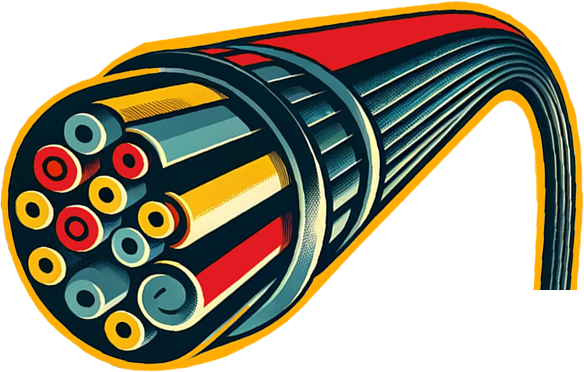Have you ever faced a sudden electrical issue at home and felt unsure about what to do?
Electrical problems can be daunting, especially when they occur unexpectedly. In this modern era, where almost every aspect of our lives depends on electricity, knowing how to handle emergency electrical repairs is crucial.
In this article, we delve into the world of emergency electrical repairs. From understanding the basics to mastering advanced troubleshooting techniques, we’ve got you covered.
Whether you’re a seasoned DIY enthusiast or a novice, this guide will equip you with the knowledge and confidence to tackle electrical emergencies effectively.
What are Emergency Electrical Repairs?
Emergency electrical repairs are critical interventions needed when electrical systems in your home or office malfunction unexpectedly, posing immediate risks to safety and property.
Imagine you’re settling in for the evening, and suddenly, the lights flicker and go out, or you notice a burning smell coming from an outlet. These are classic signs of electrical emergencies that demand immediate attention.
Such repairs are not just about fixing a blown fuse or resetting a tripped circuit breaker. They encompass a range of issues, from power outages and electrical sparks to circuit breakdowns and overloaded systems.
The urgency of these repairs stems from the potential dangers they pose.
Faulty electrical systems can lead to fire hazards, electrocution, and damage to appliances and electronics, making it imperative to address these issues promptly.
Understanding the nature of these emergencies is crucial. Power outages might be due to external factors like weather or internal issues such as a faulty wiring system.
Electrical sparks, often a sign of short-circuiting, can occur due to aging wires or improper connections. Circuit breakdowns, on the other hand, might result from overloading circuits with too many appliances or devices.
The key to handling these emergencies effectively lies in quick detection and response. It’s essential to recognize the signs of electrical problems early.
Flickering lights, buzzing sounds from outlets, frequent tripping of circuit breakers, and any unusual electrical activity should be red flags.
While some minor issues can be resolved with basic knowledge of electrical systems, most emergency electrical repairs require the expertise of a licensed electrician.
These professionals have the training, experience, and tools necessary to diagnose and fix electrical problems safely and efficiently.
They ensure that repairs are done in compliance with safety standards and regulations, providing peace of mind that your electrical system is safe and reliable.
Emergency electrical repairs are a vital aspect of maintaining a safe and functional electrical system in your home or business.
Recognizing the signs of electrical emergencies and knowing when to call in a professional are key to preventing potential hazards and ensuring the longevity of your electrical infrastructure.
Understanding the Electrical System in Your Home for Emergency Electrical Repairs
Getting to Know Your Circuit Breaker Box
The heart of your home’s electrical system is the circuit breaker box, a crucial component in preventing electrical emergencies.
It’s essential to familiarize yourself with its layout and functionality. Each breaker in the box corresponds to a specific area or appliance in your home.
Knowing which breaker controls which part of your home can be incredibly helpful in emergencies, such as when you need to quickly cut off power to a problematic area.
Labeling each breaker clearly can save valuable time and reduce confusion during an emergency.
The Importance of Ground Fault Circuit Interrupters (GFCIs)
GFCIs play a vital role in preventing electric shocks, particularly in areas prone to moisture like bathrooms and kitchens. These devices monitor the flow of electricity in a circuit and can shut off the power if they detect an imbalance, which could indicate a potential shock hazard.
Testing your GFCIs regularly (usually once a month) to ensure they are functioning correctly is a simple yet effective step in maintaining your home’s electrical safety.
Understanding Your Electrical System’s Capacity
Knowing the capacity of your electrical system is crucial in preventing overloads, which are a common cause of emergency electrical repairs.
Older homes, in particular, may have systems that aren’t equipped to handle the electrical demands of modern appliances and devices.
Be aware of the wattage and power requirements of your appliances, and avoid overloading circuits by plugging in too many high-energy devices into the same circuit. If your circuit breakers trip frequently, it could be a sign that your system is overloaded and may need an upgrade.
Regular Checks and Maintenance
Conducting regular checks on your electrical panel can alert you to potential issues like aging infrastructure or loose connections.
Look for signs of wear and tear, such as rust or burn marks, which could indicate serious problems. Scheduling periodic inspections by a licensed electrician can also help identify and rectify issues that might not be obvious to the untrained eye.
These professionals can provide valuable advice on upgrades or repairs that your system may need to ensure it remains safe and functional.
Understanding the intricacies of your home’s electrical system is a key step in preventing and effectively responding to emergency electrical repairs.
Familiarizing yourself with the circuit breaker box, GFCIs, the system’s capacity, and conducting regular maintenance checks are all essential practices for maintaining a safe and efficient electrical system in your home.
Identifying Common Electrical Emergencies in Emergency Electrical Repairs
Early Warning Signs
The key to effectively managing emergency electrical repairs is to recognize the early warning signs of potential electrical hazards. Awareness of these signs not only helps in preventing damage but also ensures your safety.
Flickering Lights
This is often the first sign homeowners notice. While it might seem like a minor issue, flickering lights can indicate a more serious problem, such as an unstable power supply or a fault in the home’s electrical wiring.
It’s important to monitor the frequency and duration of the flickering, as this can provide clues to the underlying issue.
Burning Smells
A distinct burning odor emanating from outlets, switches, or electrical panels is a critical warning sign. This usually indicates overheating, which can occur due to overloaded circuits, aging wiring, or faulty electrical devices.
Such scenarios require immediate attention as they pose a significant fire risk.
Tripped Circuit Breakers
Circuit breakers are designed to protect your home by shutting off the power when they detect an overload or short circuit. If you find yourself frequently resetting tripped breakers, it’s a sign of underlying electrical problems, such as circuit overloads, faulty appliances, or wiring issues.
Additional Indicators of Electrical Emergencies
Beyond the more obvious signs, there are additional indicators that can signal an electrical emergency.
Buzzing Sounds
A buzzing or humming noise from your electrical panel or outlets is not normal and often indicates loose connections, faulty wiring, or problems with an electrical device. These sounds can precede more serious issues, so it’s important to investigate them promptly.
Sparks from Outlets
Occasional small sparks when plugging in a device can be normal, but frequent or large sparks are a cause for concern. This could be due to a short circuit, moisture exposure, or an overloaded outlet.
Localized Power Outages
If you’re experiencing power outages in your home while the rest of the neighborhood seems unaffected, it could be due to internal wiring problems or a malfunctioning electrical panel.
By being vigilant and recognizing these signs, you can take timely action to address emergency electrical repairs.
Remember, while some issues might seem minor, they can escalate quickly if not addressed. When in doubt, it’s always best to consult with a professional electrician who can safely and effectively resolve these issues.
Prioritizing Safety in Emergency Electrical Repairs
The Importance of Turning Off Power
In the realm of emergency electrical repairs, your safety and the safety of those around you is paramount. The first and most critical step in any electrical repair scenario is to turn off the main power source.
This action is essential to prevent electric shocks, which can be fatal. It’s important to locate your main power switch or circuit breaker and know how to safely turn it off in an emergency. This precaution not only protects you but also prevents further damage to your electrical system.
Using the Right Tools and Equipment
Once the power is off, the next step is to ensure you’re equipped with the right tools and safety gear.
Using insulated tools is crucial in emergency electrical repairs. These tools are designed with non-conductive handles to prevent electric shocks. A basic set should include insulated screwdrivers, wire cutters, and pliers.
In addition to tools, wearing the appropriate protective gear is vital.
Safety glasses protect your eyes from sparks and debris, while gloves made of rubber or another non-conductive material can prevent electric shocks. It’s also advisable to wear rubber-soled shoes to insulate yourself from the ground.
Knowing When to Call a Professional
While DIY repairs can be tempting, recognizing when a situation is beyond your skill level is crucial for safety. Emergency electrical repairs often involve complex issues that require a deep understanding of electrical systems.
If you’re unsure about the safety of a situation, lack the necessary skills, or the problem involves major components like the service panel or main breaker, it’s time to call a professional electrician.
Professional electricians have the training, experience, and tools to handle emergency electrical repairs safely and effectively.
They can diagnose problems quickly, perform repairs in compliance with safety standards, and provide peace of mind that your electrical system is functioning correctly and safely.
Safety should always be the top priority when dealing with emergency electrical repairs. By turning off the power, using the right tools and protective gear, and knowing when to call in a professional, you can ensure that these repairs are conducted safely and effectively.
Remember, electricity is a powerful and potentially dangerous force, and treating it with respect is key to preventing accidents and ensuring the well-being of everyone in your home.
Essential Tools and Equipment for Emergency Electrical Repairs
Fundamental Tools for Basic Repairs
When it comes to emergency electrical repairs, being equipped with the right tools can make a significant difference.
A well-prepared toolkit is essential for both safety and effectiveness in addressing common electrical issues.
Voltage Tester
This is a crucial tool for any electrical repair work. Before you begin any repair, use a voltage tester to check if a circuit is live. This step is vital for preventing electric shocks and ensuring that it’s safe to proceed with the repair.
Wire Strippers
These are indispensable for any electrical work. Wire strippers allow you to remove the insulation from wires safely and accurately, which is essential when making connections or replacing damaged wiring.
Insulated Screwdrivers and Pliers
A set of insulated screwdrivers and pliers is a must-have. These tools are designed with non-conductive handles to prevent electric shocks while tightening or loosening connections.
Advanced Tools for Comprehensive Diagnostics
For more complex emergency electrical repairs, having advanced tools can help you diagnose and resolve issues more effectively.
Circuit Finder
This advanced tool is incredibly useful for identifying the correct circuit breaker or fuse associated with specific outlets or fixtures. It simplifies the process of locating the source of an electrical problem.
Multimeter
An essential tool for any electrician, a multimeter measures voltage, current, and resistance. It’s crucial for diagnosing a wide range of electrical problems and ensuring that repairs are effective.
Additional Equipment for Convenience and Safety
In addition to the fundamental and advanced tools, there are additional items that can aid in the repair process.
Flashlight
A reliable flashlight is indispensable, especially when working in areas with poor lighting or during a power outage. It helps you see clearly and avoid potential hazards.
Electrical Tape
This is used for insulating wires and making temporary fixes for minor issues like exposed wiring. It’s a quick solution for ensuring safety until a more permanent repair can be made.
Cable Ties and Clips
These items are useful for organizing wires and keeping them safely out of the way. They help prevent accidents and make the workspace more manageable.
By equipping yourself with these essential tools and equipment, you can effectively manage most emergency electrical repairs.
However, it’s important to remember that complex electrical issues should always be handled by professional electricians. They have the expertise to ensure that repairs are done safely and in compliance with electrical codes, providing peace of mind and security in your home or workplace.
Advanced Troubleshooting Techniques for Emergency Electrical Repairs
Diagnosing Complex Issues
When it comes to emergency electrical repairs, some problems are not immediately apparent and require advanced troubleshooting techniques.
Understanding how to diagnose these complex issues is crucial for effective and safe resolution.
Intermittent Issues
Sometimes, electrical problems are sporadic, making them harder to diagnose. In such cases, keeping a log of when the issue occurs can help identify patterns and potential causes.
Using a Multimeter
A multimeter is invaluable for diagnosing complex electrical issues. It can measure voltage, current, and resistance, helping to pinpoint problems like short circuits, ground faults, or overloaded circuits.
Checking for Loose Connections
Loose connections can cause a range of issues, from flickering lights to circuit overloads. Inspect all connections in the problem area, including outlets, switches, and junction boxes.
Identifying Wiring Issues
Older homes may have outdated or deteriorating wiring that can lead to various electrical problems. If you suspect wiring issues, it’s often best to consult a professional electrician.
Temporary Fixes vs. Permanent Solutions
In emergency electrical repairs, it’s important to distinguish between temporary fixes and permanent solutions.
Knowing when a quick fix is sufficient and when to call a professional can save time, money, and ensure safety.
When to Use Temporary Fixes
In some cases, a temporary fix can be safe and effective. For example, using electrical tape to cover exposed wiring can prevent immediate hazards until a professional can make a permanent repair.
Understanding the Limits of DIY Repairs
While DIY repairs can be tempting, they often only address the symptoms of a problem, not the underlying cause. For instance, repeatedly resetting a tripped circuit breaker without identifying the cause can lead to more significant issues.
Recognizing the Need for Professional Help
Complex problems, such as issues with the main electrical panel, wiring upgrades, or installations, should always be handled by a licensed electrician. They have the expertise to ensure that repairs are done safely and in compliance with local electrical codes.
Evaluating Safety and Compliance
Safety should always be the top priority.
A professional electrician can ensure that your electrical system is not only functioning properly but also safe for you and your family. They can also ensure that your repairs comply with the latest electrical standards and regulations.
Advanced troubleshooting techniques are essential in identifying and resolving complex issues in emergency electrical repairs.
While temporary fixes can be useful in certain situations, understanding the limitations of DIY repairs and knowing when to seek professional assistance is crucial for long-term safety and effectiveness.
Here’s everything else you need to know about handling emergency electrical repairs effectively.
Preventive Measures for Emergency Electrical Repairs
Regular Inspection and Maintenance
One of the most effective ways to minimize the risk of electrical emergencies is through regular inspection and maintenance of your electrical system.
This proactive approach involves several key steps:
Routine Check-ups
Schedule regular inspections of your electrical system by a licensed electrician. These professionals can identify and rectify potential issues before they escalate into emergencies.
Monitoring Electrical Panels
Keep an eye on your electrical panel for any signs of wear, such as rust or loose connections. An outdated or overloaded panel can be a significant risk factor for electrical emergencies.
Testing Safety Devices
Regularly test safety devices like circuit breakers and Ground Fault Circuit Interrupters (GFCIs). These devices are designed to protect your home from electrical hazards, but they need to be in good working order to be effective.
Safe Usage of Electrical Appliances and Devices
The way electrical appliances and devices are used can greatly impact the risk of electrical emergencies. Here are some guidelines to ensure safe usage:
Avoid Overloading Outlets
Plugging too many devices into a single outlet can lead to overheating and electrical fires. Use power strips wisely and avoid daisy-chaining extension cords.
Proper Handling of Cords and Cables
Regularly check cords and cables for damage, and replace any that are frayed or worn. Ensure cords are not running under carpets or in high-traffic areas where they can be damaged.
Safe Appliance Usage
Follow manufacturer guidelines for all electrical appliances. This includes not overloading washing machines or dryers, keeping vents clear, and unplugging small appliances when not in use.
Educating Household Members
Education is a key component in preventing electrical emergencies. Ensure that all household members, including children, understand basic electrical safety principles:
Understanding the Basics
Teach family members about the dangers of electricity and the importance of respecting electrical appliances and outlets.
Emergency Response Plan
Have a plan in place for electrical emergencies, such as knowing how to turn off the main power and when to evacuate the house.
Safe Practices
Encourage safe practices like not inserting foreign objects into outlets and the proper use of electrical devices.
By implementing these preventive measures, you can significantly reduce the risk of emergency electrical repairs.
Regular maintenance, safe usage of appliances, and educating household members are key strategies in ensuring a safe and well-functioning electrical system in your home.
DIY Repairs vs. Professional Help in Emergency Electrical Repairs
Assessing DIY Electrical Repair Capabilities
When facing emergency electrical repairs, it’s crucial to assess whether a DIY approach is appropriate or if professional help is needed. Here are some factors to consider:
Skill Level
Evaluate your understanding and experience with electrical systems. Simple tasks like replacing a light switch or outlet can typically be done by someone with basic DIY skills. However, more complex tasks require a deeper knowledge of electrical systems.
Safety Considerations
Electrical work can be dangerous. If you’re not confident in your ability to perform the repair safely, it’s best to call a professional. Safety should always be your top priority.
Tools and Equipment
Do you have the necessary tools and equipment for the job? Proper tools are essential for safe and effective electrical repairs.
When to Opt for DIY Repairs
There are certain situations where DIY repairs can be appropriate:
Simple Replacements
Replacing light bulbs, installing a new light fixture, or changing switch plates are generally safe and straightforward tasks that can be done without professional help.
Basic Troubleshooting
Resetting tripped circuit breakers or replacing fuses can often be handled without calling an expert.
Recognizing the Need for Professional Assistance
Some electrical issues are too complex or dangerous for a DIY approach and require the expertise of a professional electrician:
Major Installations and Repairs
Tasks like wiring upgrades, installing new circuits, or repairing major appliances should be left to professionals. These jobs often require permits and inspections to ensure they meet local electrical codes.
Recurring Problems
If an issue keeps reappearing, it’s a sign of a deeper problem in your electrical system. A professional electrician can diagnose and fix the root cause of the issue.
Safety Concerns
Any repair that involves the main electrical panel or service line should be handled by a licensed electrician. These areas pose significant risks and require specialized knowledge.
While some emergency electrical repairs can be handled through DIY methods, it’s important to recognize your limits and understand when to call in a professional.
Assessing the complexity and safety risks of the task at hand will help you make the right decision, ensuring the safety and reliability of your electrical system.
Navigating Insurance and Emergency Electrical Repairs
Understanding Your Homeowner’s Insurance Policy
When it comes to emergency electrical repairs, it’s essential to have a clear understanding of what your homeowner’s insurance policy covers.
Policies vary, but many include coverage for damages caused by electrical fires or significant system failures. It’s important to read your policy carefully or consult with your insurance agent to understand the specifics.
Look for clauses that detail coverage limits, deductibles, and any exclusions. Knowing these details beforehand can save you from unexpected expenses and help you make informed decisions during emergencies.
Documenting Electrical Damages
In the event of an electrical emergency that causes damage to your home, thorough documentation is key for a successful insurance claim.
Take clear photographs of the damage and make detailed notes of what happened, including dates and times. If an electrical fault leads to a fire or other secondary damage, document that as well.
Keep receipts for any immediate repairs or temporary measures you take, as these may be reimbursable under your policy.
Reporting to Your Insurance Company
Prompt reporting of the damage to your insurance company is crucial.
Most policies have a time frame within which you must report an incident to be eligible for coverage. When you contact your insurer, they will typically provide you with a claim number and may offer guidance on the next steps, such as getting a professional assessment of the damage.
Working with Electricians for Repair Estimates
Getting a professional repair estimate is often a necessary step in the insurance claim process.
Contact a reputable electrician, preferably one with experience in dealing with insurance claims, to assess the damage and provide a detailed repair estimate. This estimate should include a breakdown of the required repairs, the materials needed, and the associated costs.
Some insurance companies may require estimates from multiple electricians, so be prepared to coordinate this if needed.
Navigating the Claims Process
The claims process can be complex, and it’s important to stay organized and proactive. Keep a record of all communications with your insurance company, including emails, calls, and any decisions made.
Be prepared for a possible visit from an insurance adjuster, who will assess the damage independently.
Throughout the process, maintain open communication with your insurer to ensure that your claim is processed efficiently.
Effective navigating insurance claims for emergency electrical repairs requires understanding your policy, thorough documentation, prompt reporting, professional assessments, and proactive communication.
By being prepared and informed, you can streamline the claims process and ensure that you receive the coverage you need to address electrical emergencies in your home.
Top 5 Tips for Safe Emergency Electrical Repairs
1. Cut Off Your Power Supply
The first and most critical step in emergency electrical repairs is to ensure your safety by cutting off the power supply.
This means turning off the power at the breaker box before beginning any repair work. Working on live wires can lead to severe shocks or even electrical fires, posing a significant risk to your safety.
It’s essential to verify that the power is completely off in the area you will be working on. This can be done using a non-contact voltage tester, a handy tool for any electrical repair kit.
2. Wear Proper Safety Gear
When dealing with emergency electrical repairs, personal protective equipment is non-negotiable. Safety glasses or goggles are essential to protect your eyes from sparks or debris.
Insulated gloves provide a barrier against electric shocks, while a heavy-duty apron can protect your body from potential burns or cuts. Additionally, working in wet conditions increases the risk of electrocution, so it’s crucial to ensure the work area is dry.
Rubber-soled shoes are recommended as they provide insulation from the ground, further reducing the risk of electric shock.
3. Use Grounding Techniques
Proper grounding is a fundamental aspect of safe electrical work. Grounding helps create a safe path for excess electricity, significantly reducing the risk of electric shock.
When making repairs, ensure that the ground clamp of your tool is securely attached. If you’re working with a three-pronged plug, the ground wire should be the last to be disconnected.
This practice ensures that you have a grounding path throughout the repair process, enhancing safety.
4. Understand Electrical Basics
A basic understanding of electrical concepts is crucial for safely conducting emergency electrical repairs.
Familiarize yourself with the principles of amps, volts, and wattage, as this knowledge is essential for assessing and addressing electrical issues correctly.
Additionally, understanding the difference between alternating current (AC) and direct current (DC) can help prevent shock hazards, especially in complex repair scenarios.
5. Inspect Your Work
After completing any repair, a thorough inspection is vital. Check all connections to ensure they are tight and secure.
Look for any signs of corrosion, burning, or damage that could indicate a problem. This step is crucial for preventing future issues and ensuring the longevity and safety of your electrical system.
If you notice any anomalies or are unsure about your repair, it’s advisable to consult a professional electrician for a second opinion.
By following these top 5 tips for emergency electrical repairs, you can ensure a safer and more effective approach to handling common electrical issues.
Remember, when in doubt, always prioritize safety and consider seeking professional assistance.
The Local Electrician TX: Your Ally in Emergency Electrical Repairs
Reliable Service in Times of Need
When it comes to emergency electrical repairs, having a dependable service provider like The Local Electrician TX can make all the difference.
In emergencies, you need a service that not only responds quickly but also has the expertise to handle complex electrical issues safely and efficiently.
The Local Electrician TX stands out as a reliable ally, offering professional electrical services tailored to meet the urgent needs of homeowners and businesses alike.
Expertise and Professionalism
The Local Electrician TX brings a wealth of experience and knowledge to every emergency situation.
Their team of licensed electricians is well-versed in a wide range of electrical systems and can swiftly diagnose and resolve issues.
Whether it’s a power outage, electrical surges, or wiring problems, their expertise ensures that your electrical emergencies are addressed with the highest level of professionalism and skill.
Safety and Compliance
One of the key aspects of The Local Electrician TX’s service is their commitment to safety and adherence to electrical codes and standards.
In emergency electrical repairs, safety cannot be overstated. Their electricians follow strict safety protocols to ensure that all repairs are conducted safely, minimizing the risk of accidents or further damage to your electrical system.
24/7 Availability
Electrical emergencies can happen at any time, and The Local Electrician TX understands this. They offer 24/7 availability, ensuring that you have access to emergency electrical repair services whenever you need them.
This round-the-clock service is particularly crucial for urgent issues that cannot wait, providing peace of mind that help is always just a phone call away.
Customer Satisfaction and Trust
Building trust with customers is at the heart of The Local Electrician TX’s service. They prioritize clear communication, transparency in pricing, and delivering quality work.
Customer satisfaction is paramount, and they strive to ensure that every emergency repair is handled promptly and effectively, with minimal disruption to your daily life.
Connect with The Local Electrician TX
For more information about their services and to read customer reviews and ratings, visit The Local Electrician TX’s Google My Business page: The Local Electrician TX GMB.
Here, you can also find their contact details and service areas, making it easy to reach out in case of an emergency.
The Local Electrician TX is a valuable resource for anyone facing emergency electrical repairs. Their expertise, commitment to safety, 24/7 availability, and focus on customer satisfaction make them an ideal choice for reliable and professional electrical services.
Conclusion
In the realm of emergency electrical repairs, preparation and safety are paramount. Understanding the potential risks and knowing how to respond effectively can make a significant difference in protecting your home and loved ones.
Remember, the key to handling electrical emergencies lies in recognizing the signs early, using the right tools, and knowing when to call in the experts.
Always prioritize safety by turning off the power supply before attempting any repairs and using the appropriate safety gear.
Regular maintenance and inspections can help prevent many electrical emergencies, but when they do occur, having a reliable service like The Local Electrician TX can be invaluable.
We encourage you to share your experiences and questions about emergency electrical repairs. Your insights can help others in our community stay informed and prepared.
Whether you’ve successfully handled a minor repair or needed professional assistance for a major issue, your story can provide valuable lessons and tips.
Please leave your comments, stories, or questions below. Let’s create a space where we can all learn from each other’s experiences and continue to promote safety and preparedness in dealing with emergency electrical repairs.
Remember, staying informed and connected is key to navigating these challenges effectively.
FAQs
- What should I do first in an electrical emergency?
First and foremost, ensure your safety by turning off the main power supply to prevent electric shocks. Then, assess the situation to determine if it’s something you can handle or if you need to call a professional electrician.
- How do I know if an electrical issue is an emergency?
Signs of an electrical emergency include frequent circuit breaker trips, burning smells from outlets or appliances, visible sparks, and any situation where you feel your safety is at risk.
- Can I perform emergency electrical repairs myself?
While some minor issues can be handled safely with the right knowledge and tools, more complex problems should always be addressed by a licensed electrician to ensure safety and compliance with electrical codes.
- What are the risks of DIY electrical repairs?
DIY electrical repairs can lead to electric shocks, fires, or further damage to your electrical system if not done correctly. It’s important to understand your limitations and when to seek professional help.
- How often should I have my electrical system inspected?
It’s recommended to have a professional inspection at least once every few years, or more frequently if your home is older or you’re experiencing regular issues.
- What should be in my emergency electrical repair kit?
A basic kit should include a voltage tester, insulated screwdrivers, wire strippers, electrical tape, a flashlight, and a multimeter.
- What is the most common cause of electrical emergencies in homes?
Common causes include outdated wiring, overloaded circuits, faulty appliances, and damaged electrical outlets.
- How can I prevent electrical emergencies?
Regular maintenance, safe usage of appliances, not overloading circuits, and promptly addressing any minor issues can help prevent emergencies.
- When should I call an electrician after an electrical emergency?
If the issue is beyond basic troubleshooting, involves the main power line or panel, or if you’re unsure about the safety of the situation, call a professional electrician immediately.
- Are there any signs that my electrical system is outdated and needs an upgrade?
Signs include frequent breaker trips, flickering lights, and the inability to use multiple appliances simultaneously.
If you have an older home, it’s wise to get a professional assessment.
Feel free to share your own questions or experiences related to emergency electrical repairs. Your input can help others better understand and navigate these critical situations.




























